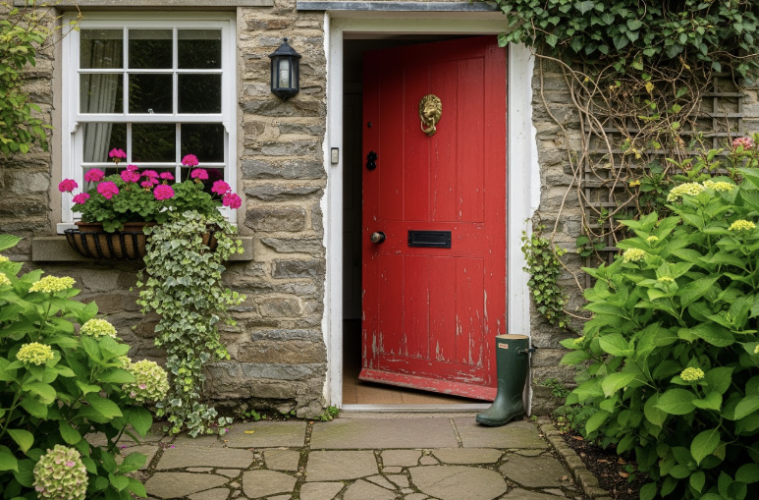We build homes for shelter, yet we secretly long for narrative. Contemporary architecture often delivers clean efficiency, but sometimes forgets the soulful whisper of a crooked path or a hidden garden. There exists a design element capable of stitching that missing magic directly into your dwelling’s facade. More than just an entry point, this feature acts as a portal to a different sensibility, one of wild roses, morning tea, and unhurried afternoons. It’s the cottage door, an invitation to a quieter, more romantic way of living.
Defining a Timeless Archetype
What exactly constitutes this classic style? Authentic cottage doors defy rigid classification, drawing their appeal from a feeling of handmade warmth and gentle imperfection. Unlike mass-produced units, they often showcase craftsmanship through raised or fielded panels, sometimes with a subtle, gentle arch at the top. Wood is the quintessential material, typically painted in soft, muted tones or left to weather naturally. A distinguishing characteristic is their welcoming, approachable scale; they feel human-sized, not monumental, often framed by climbing plants or a simple, pitched roof.
Finding Its Place in Your Floor Plan
You needn’t own a thatched-roof hideaway to justify this addition. The charm lies in its surprising versatility. Consider replacing a standard rear entry leading to your garden, instantly transforming a mundane patio exit into the gateway to a secret retreat. Inside, using one for a pantry, a reading nook, or a home library creates a delightful sense of discovery, as if you’re uncovering a hidden room. Even a modern home can benefit from the striking juxtaposition of a rustic, storybook door against a minimalist backdrop.
Material and Craftsmanship Choices
Selecting the right door involves embracing character. Solid timber, like oak or pine, is the traditional and most authentic choice. Its natural grain and potential for slight movement over time contribute to the lived-in, organic aesthetic. For a more maintenance-friendly option, fiberglass or steel models now expertly replicate the look of wood with detailed texture and paneling. Look for features that suggest age and artistry: chamfered edges, traditional Z-brace construction on the back, or hand-forged iron door furniture.
The Alchemy of Color and Finish
Hue plays a pivotal role in establishing the door’s personality. While classic cream or sage green are perennial favorites, don’t shy away from deeper, moodier shades like slate blue or forest green for a more dramatic anchor. The finish should feel soft and timeworn. A technique like distressing the paint slightly or using a milk paint formula can achieve that coveted, centuries-old patina. The goal isn’t a flawless, factory-perfect coat, but one that suggests generations of gentle use and sunny mornings.
Creating a Cohesive Entrance
A cottage door never stands alone; it is the centerpiece of a curated vignette. The surround is crucial. Flank it with salvaged brick or river rock piers instead of plain siding. Install a simple, pitched roof or a wooden trellis overhead, ready to support a climbing clematis or a sleepy rose bush. Underfoot, a path made of irregular flagstones or old bricks completes the journey, leading the eye and the foot toward this inviting focal point.
Hardware and Final Embellishments
The accessories you choose are the final brushstrokes on this canvas. Opt for wrought iron or black matte finishes for latches, hinges, and knobs. A thumb latch or a Suffolk latch adds immense authenticity and a satisfying tactile experience. An antique glass knob on the interior side provides another layer of charm. Consider a door knocker with a botanical or animal motif to reinforce the rustic, natural theme. Every piece should feel chosen, not just supplied.
Welcoming a New Chapter
Incorporating a cottage door is more than a simple stylistic swap. It is a conscious decision to infuse your daily environment with narrative and warmth. This single architectural feature can redefine the entire character of your home’s exterior, turning an ordinary entrance into a promise of comfort and tranquility. It reminds us that a house becomes a home not just through its size or its amenities, but through the small, soulful details that speak directly to the heart. By opening this door, you are not just entering a room, you are stepping into a story.
Published by HOLR Magazine.


